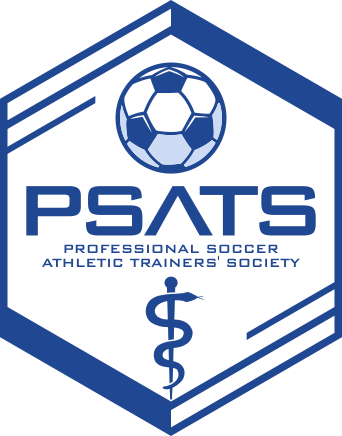By: Daniel Givens and Sara Kusner - Columbus Crew
Coping Mechanism in Adolescent Athletes
- Participants in the study were healthy athletes (n = 70; 47 males, 23 females) between 12-18 years of age (15.31 ± 1.35) who were student athletes at a high school or contracted to play for soccer academy and injury free at baseline (Injury and illness were defined as limiting full sports participation or actively engaged in a physical rehabilitation.)
- At follow-up, adolescents (n = 7, 7 males) were included if they missed at least 3 days of organized team activities due to an injury or illness. One of those days had to be a competition.
|
Table 1. Coping Mechanism by Sport Specialization Level |
|||
|
Sport Specialization |
Task |
Emotion |
Avoidant |
|
Low (n = 9) |
41.78 ± 9.77 |
48.00 ± 11.53 |
48.89 ± 9.12 |
|
Moderation (n = 25) |
45.44 ± 9.34 |
51.04 ± 10.52 |
52.56 ± 7.58 |
|
High (n = 36) |
48.50 ± 10.30 |
52.06 ± 9.36 |
56.22 ± 9.09 |
Participants were asked to complete the (1) Demographics Questionnaire, (2) Coping Inventory for Stressful Situations-Situation Specific Coping (CISS-SSC) and (3) Sport Specialization Scale at the beginning of their respective sport seasons. The CISS-SSC was administered a second time to those who missed 3 days of organized team activities. (The CISS measures three types of coping styles, to help determine the preferred coping. Results are thought to be useful for intervention planning.)
|
Table 2. Coping Mechanism Scores Pre and Post-Injury |
||
|
Coping Mechanism |
Pre-Injury |
Post-Injury |
|
|
(n=7) |
(n=7) |
|
Task-Focused Coping |
47.15 ± 13.21 |
49.71 ± 11.57 |
|
Emotion-Focused Coping |
47.71 ± 8.12 |
46.00 ± 7.57 |
|
Avoidant-Focused Coping |
52.86 ± 9.99* |
50.29 ± 9.12* |
Key points from this study are discussed below:
- Despite highly specialized athletes scoring higher in emotion and avoidant-focused coping mechanisms, no significant differences were identified between coping mechanism and sport specialization levels in adolescent athletes.
- Highly specialized athletes were not more likely to display emotion-focused coping as their primary coping mechanism.
- After injury or illness, avoidance coping scores were significantly lower than at baseline.
- Primary coping mechanism was consistent in 57.14% of the athletes from baseline to post-injury follow-up.
If you want to see more about this study, Sara’s research can be found by clicking the button at the bottom of the article.
For further information on the survey utilized in this study click on the button at the bottom of the article.
Picture 1. The Columbus Crew set a new world record for longest chain of fan scarves as a part of their campaign to defeat the stigma of children’s mental health. To support this cause click on the button at the bottom of the article.
If you would like to look further into the On Our Sleeves movement information can be found by clicking on the button at the bottom of the article.
Daniel Givens MBA, MS, AT, ATC
Athletic Trainer Columbus Crew
Sara Kusner MS, AT, ATC
Head Athletic Trainer Crew 2
References
- Kusner, Sara and Harris, Laura (2022) "The Relationship between Sport Specialization and Coping Mechanisms in Adolescent Athletes," Journal of Sports Medicine and Allied Health Sciences: Official Journal of the Ohio Athletic Trainers Association: Vol. 8: Iss. 1, Article 3.
- The Cognitive Centre. 2022. Coping Inventory for Stressful Situations (CISS™) - The Cognitive Centre. Available at: <https://www.cognitivecentre.com/assessment/coping-inventory-stressful-situations-ciss/#:~:text=CISS%3A%20Situation%20Specific%20Coping%20(CISS,relationship%2C%20or%20a%20personal%20conflict.> [Accessed 15 May 2022].
- 2022. Available at: <https://www.onoursleeves.org/> [Accessed 15 May 2022].
- Miller M, Malekian S, Burgess J, LaBella C. Evaluating a commonly used tool for measuring sport specialization in young athletes. J Athl Training. 2019;54(10):1083-1088.
- Waldron S, Defreese J, Pietrosimone B, Register-Mihalik J, Barczak N. Exploring early sport specialization: associations with psychosocial outcomes. J Clin Sport Psychol. 2020;14(2):182-202. doi:10.1123/jcsp.2018-0061.
- Brenner JS, Labotz M, Sugimoto D, Stracciolini A. The psychosocial implications of sport specialization in pediatric athletes. J Athl Training. 2019;54(10):1021-1029. doi:10.4085/1062-6050-394-18.
- Russell AM, Cottingham M, Barry A, Lee D, Walsh D. Students transitioning to college and out of competitive sport: athletic identity, coping, and stress. J Appl Sport Manage. 2018;10(4): 34-50. doi:10.18666/jasm-2018-v10-i4-9117.




